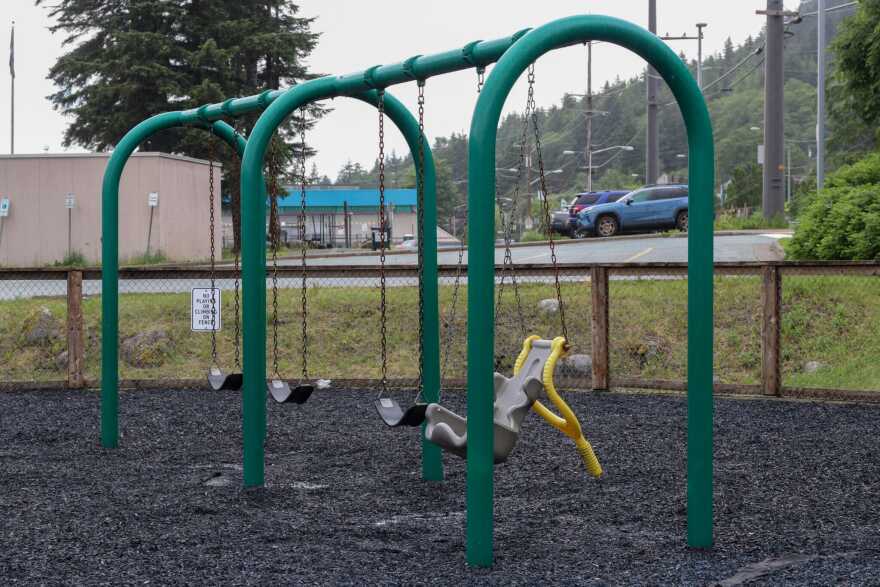The Alaska Office of Children’s Services has struggled with staffing for years, from high vacancies and turnover to high caseloads. And data shows caseworker demographics also don’t line up with the state’s, or the system’s children.
According to the 2023 progress report on the state’s child welfare system, 8.7% of caseworkers are Alaska Native or American Indian, and more than 71.9% are white. As for supervisors, all but 2 of the agency’s 13 supervisors are white. The agency is turning to training and partnering with tribes to address the gap.
Indigenous children have been overrepresented in Alaska’s child welfare system for years. State population estimates from last year show that 23.8% people under the age of 18 are Alaska Native or American Indian. But data from the Office of Children’s Services shows they consistently make up around two-thirds of the children who are in out-of-home care such as a foster home. It’s been as high as 69% in the past.
Mary Johnson is the senior director of family services at the Central Council of the Tlingit and Haida Indian Tribes of Alaska, and worked as a caseworker for a tribal organization earlier in her career. She said the racial disparity concerns her.
“How do we connect with this, these 69% of our families?” she said. “If they are from one population, it would make sense that we would want to identify people to work with the population who are like them.”
Kate Paskievitch is a public information officer with the Alaska Department of Family and Community Services, which runs OCS. In an email, she wrote that “OCS does not view this as a ‘concern’ in the sense of a problem to be fixed, but it does guide our efforts to provide culturally responsive care.”
She wrote that care includes partnering with local tribes in the state on cases, prioritizing hiring local staff in the communities they serve, and providing ongoing training on cultural responsiveness.
Tlingit and Haida is one of the tribes that partners with the state on cases that apply to the Indian Child Welfare Act, or ICWA. That federal law lays out minimum requirements when taking on a case involving Indigenous children. The state must try to place children with their family members or in their local communities first.
Johnson herself is Yup’ik. She said it’s important to have tribal representation when working on these child welfare cases.
“It makes sense that if you’re not able to recruit and hire Alaska Native people, at least partner with tribes, at least have tribal partners be a part of the decision making process when making decisions about how our children and families are being cared for and treated,” she said.
Johnson said the tribe largely employs Alaska Native people in its family services office. She said it’s important to have Alaska Native people working on cases, either as a caseworker or as a tribal partner.
“I do think in the field of child welfare, when it’s something so serious and so personal, that the people making the decisions for the group of people that are involved really should have knowledge on how this other group exists in this world, right, and how we parent,” she said.
Trevor Storrs is the president of Alaska Children’s Trust, a nonprofit that advocates and works toward ending child abuse and neglect in the state. He said hiring people whose racial demographics line up with the people they serve is important, but it’s hard to focus on that when the entire system is strained.
“They’re doing really important work, and their hearts are out to protect kids, but they’re also challenged,” he said. “There have been audits. They have high caseloads. They can’t keep staff. There’s just all these challenges.”
Storrs said training on cultural responsiveness is part of social work programs, which is why he said it’s important for the state to hire credentialed workers. That also isn’t always happening.
An audit performed this year on OCS shows many people hired do not have a degree in social work. The state even hired case workers with only a high school diploma.
Storrs said the state should be looking for ways to improve the system as a whole. He said he wants to see a focus on supporting children and families and preventing the problems that lead to OCS intervening.
“It’s less kids that are not going to school, less kids and families addicted to substances, and for us and for OCS, it would be less cases of child abuse and neglect,” he said.
Research from Casey Family Programs shows some children benefit from the system, but they often leave state custody with lasting negative effects on their education, mental health and employment.
A change to the system might be on the horizon. A federal class action lawsuitagainst the state aiming to reform the system is awaiting a judge’s decision.

